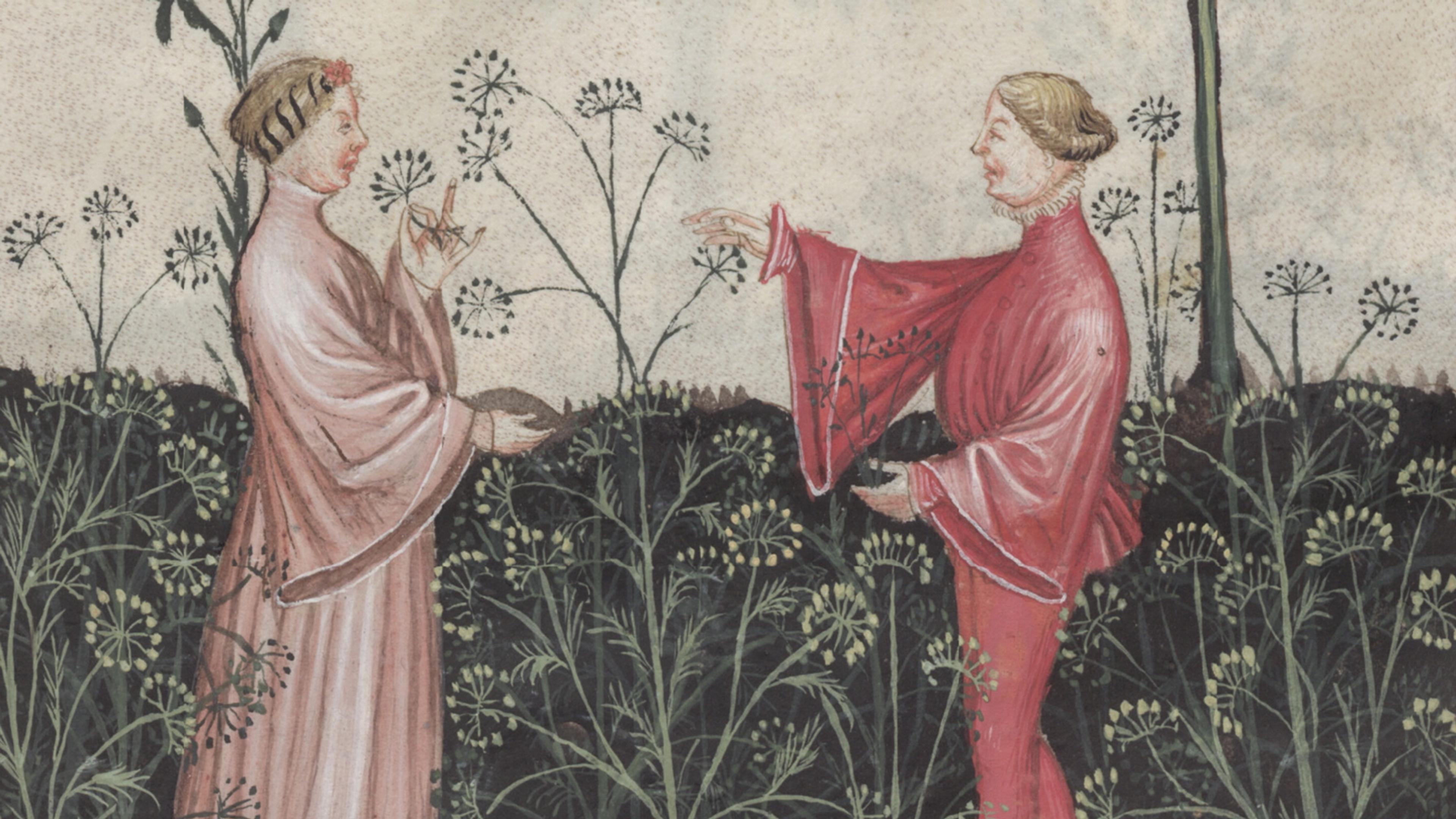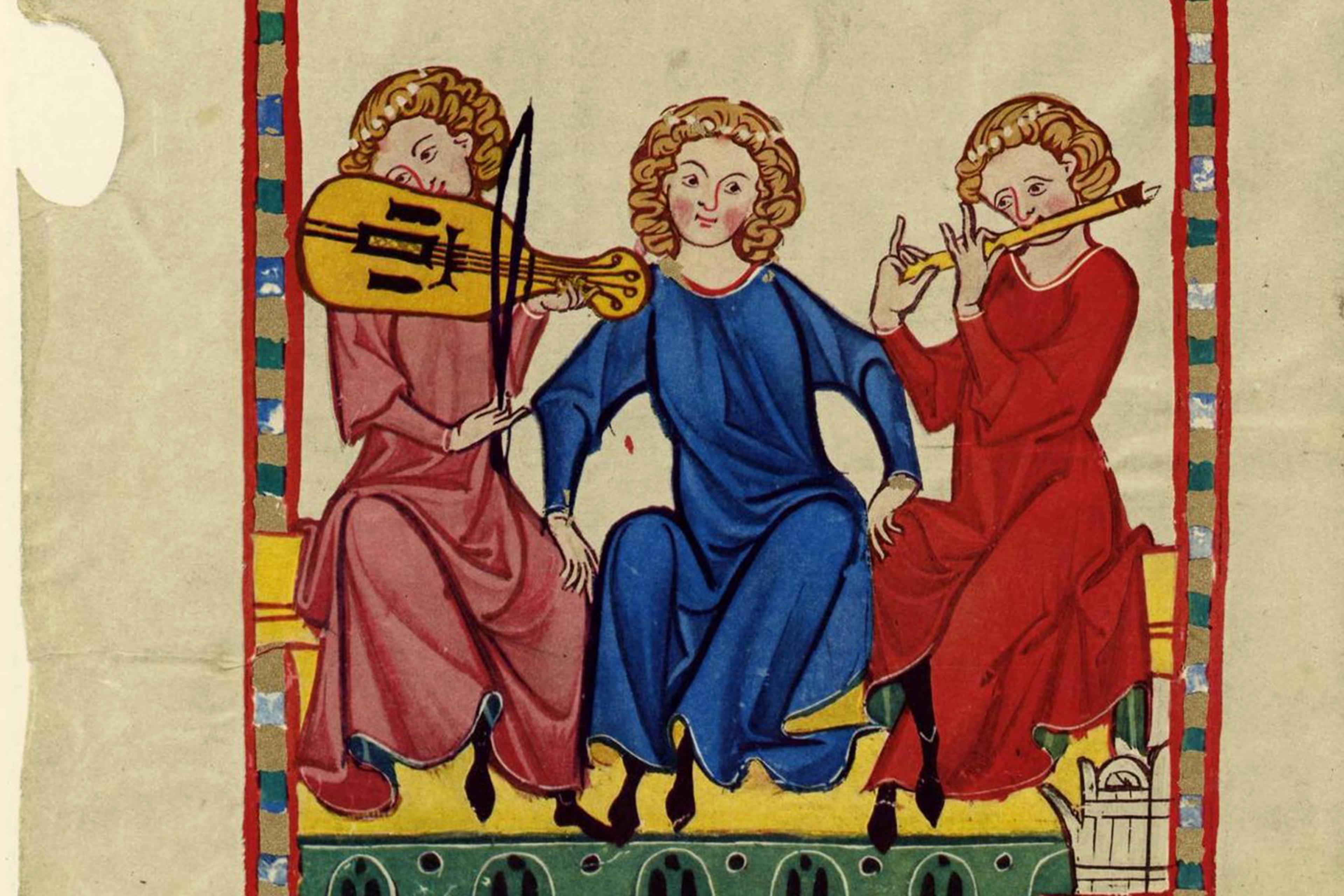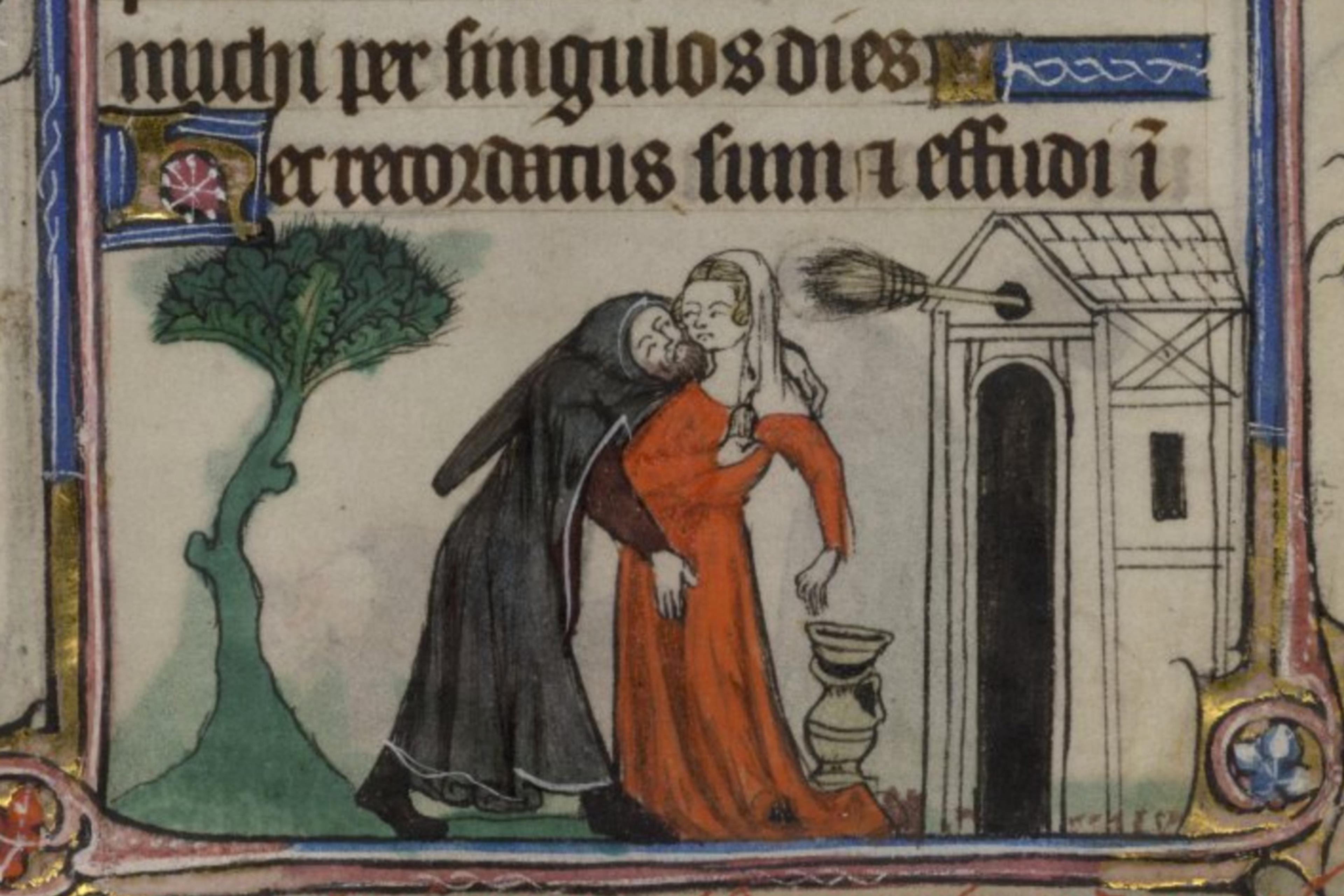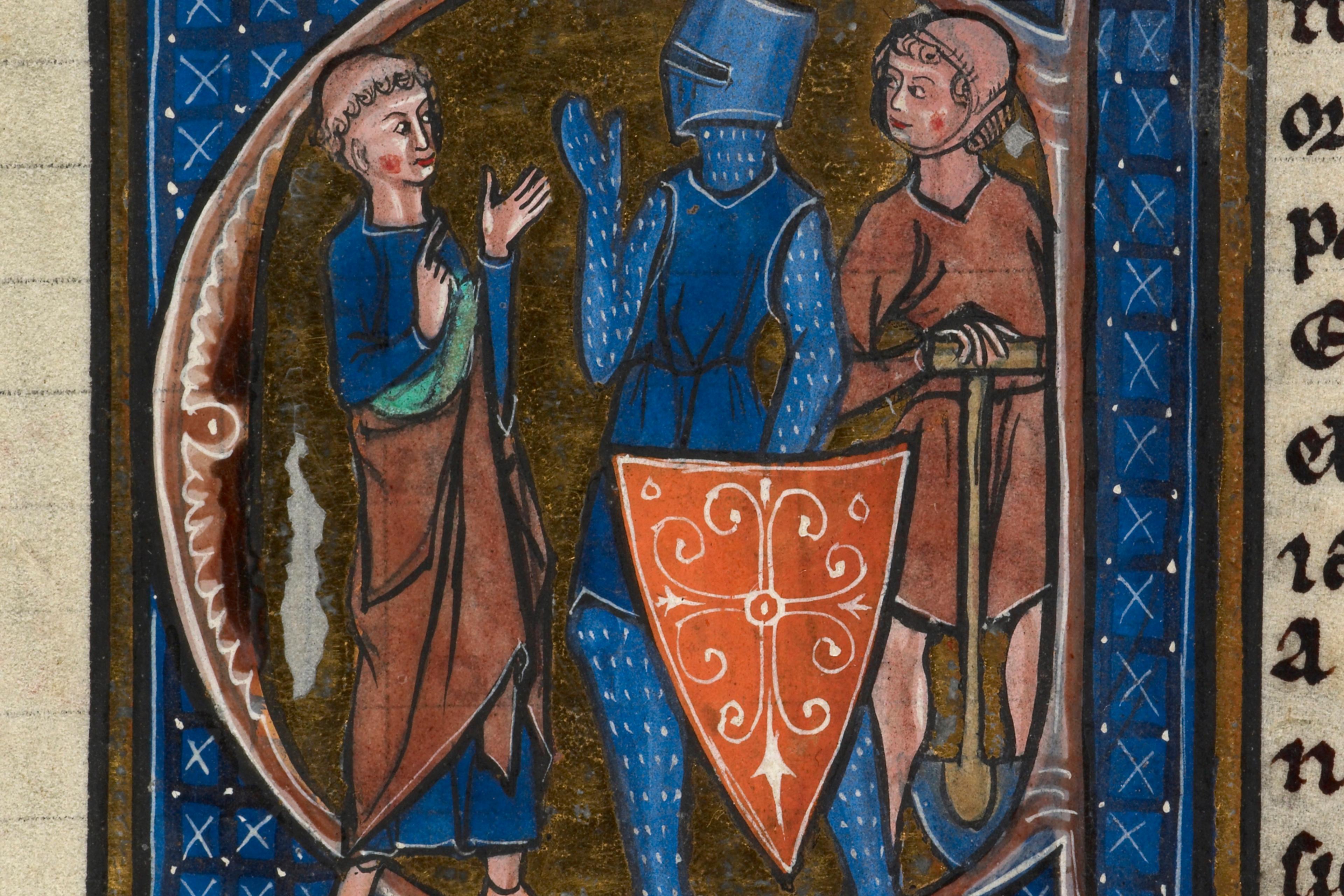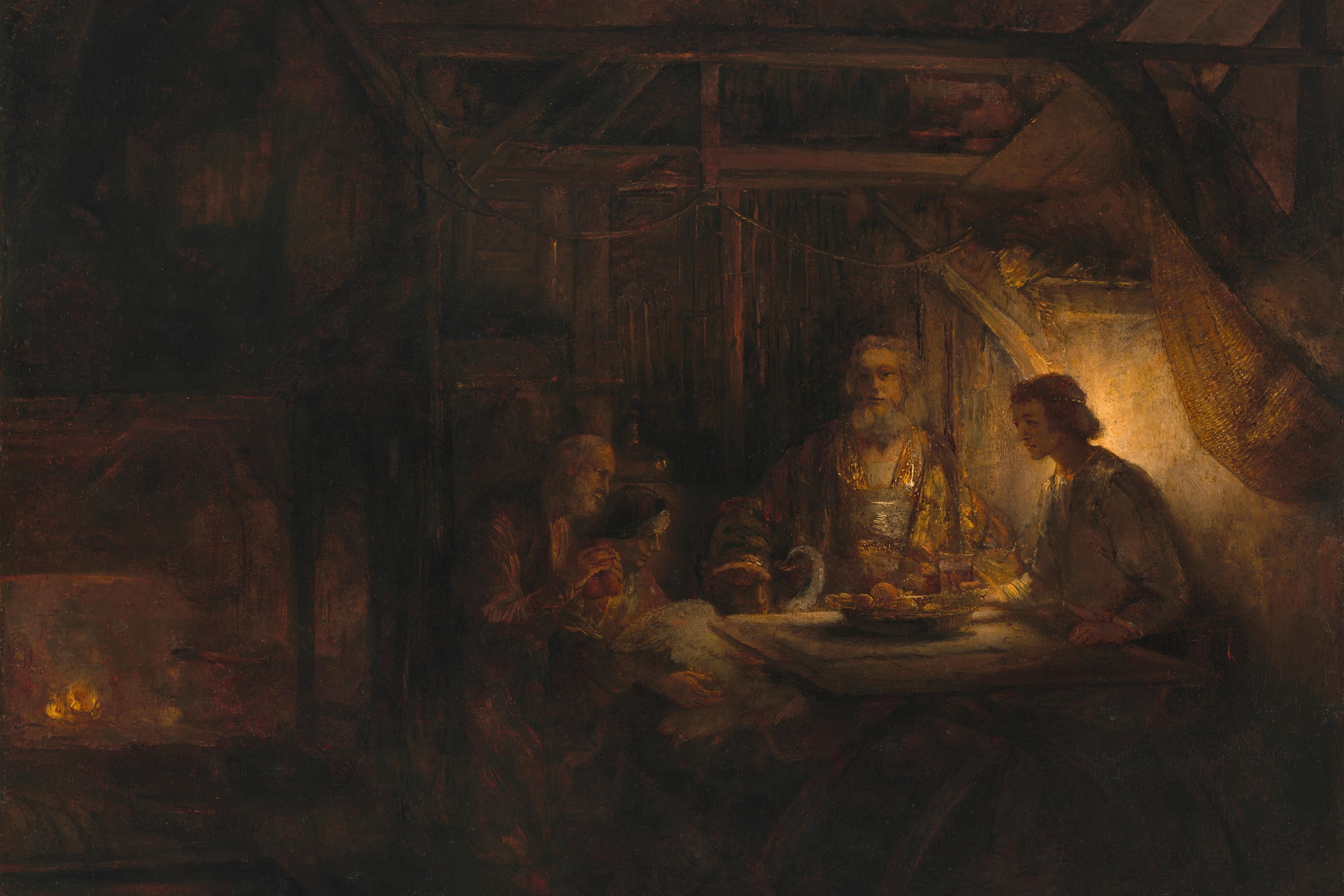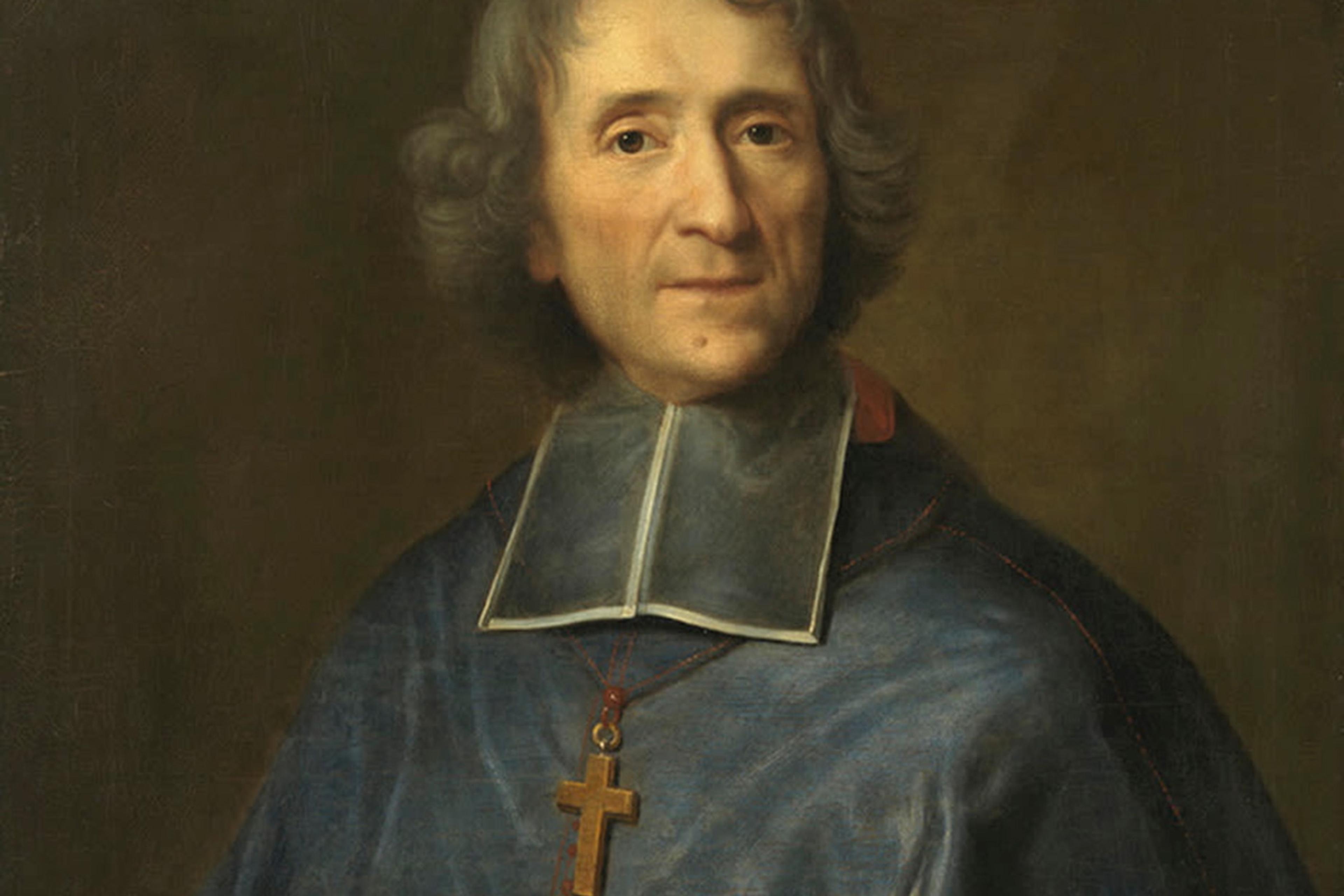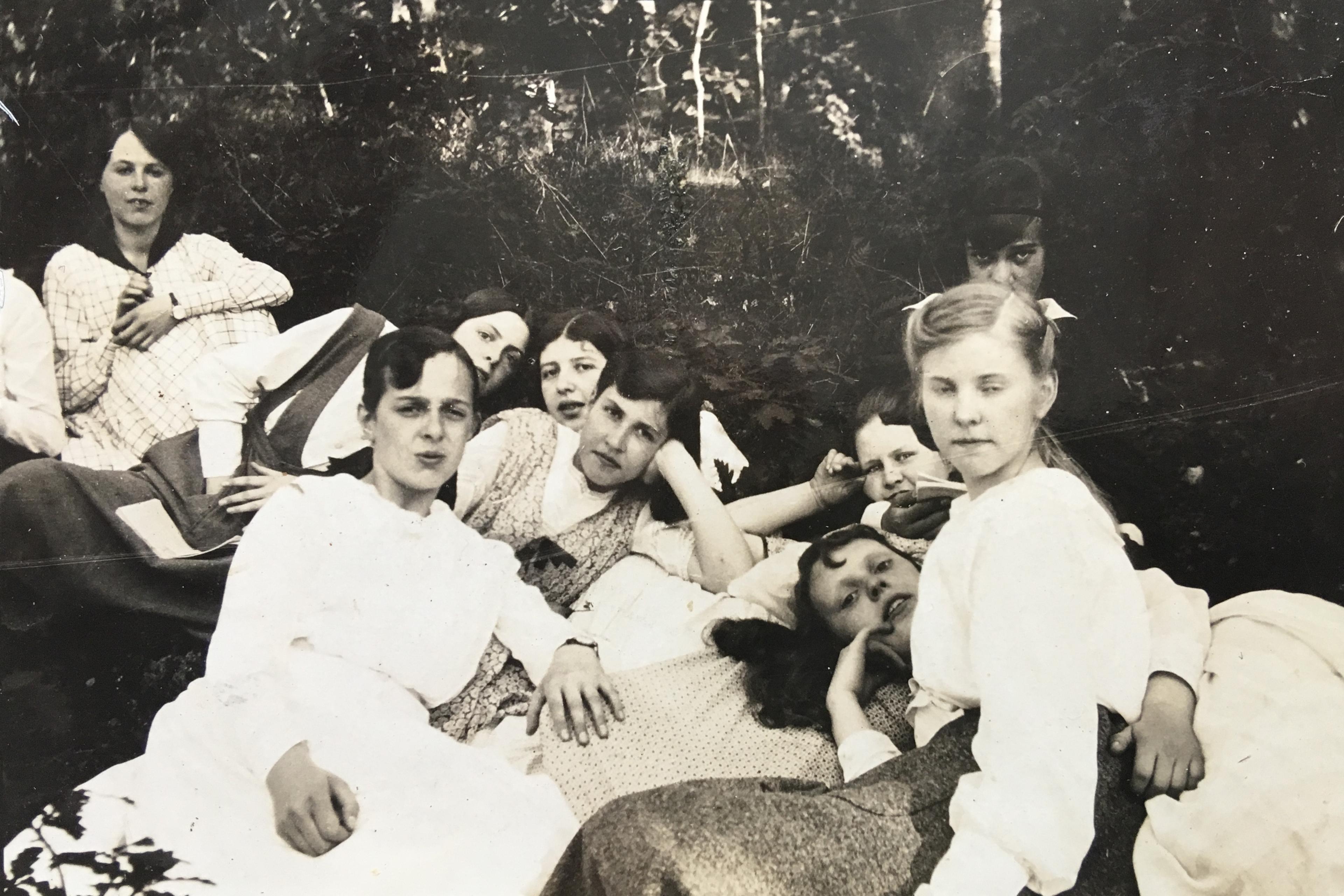During the Middle Ages, battle-hardened knights wrote love songs. In one, the Occitan troubadour and knight Bertran de Born, describes – in graphic detail – his exploits on the battlefield, excitedly anticipating the sight of shattered armour and bodies cleaved in two:
Soon we shall see fields strewn with fragments
Of helms, of shields, of swords, and of bows,
And with men split through the torso to their pants,
And we’ll see the warhorses go riderless,
And many a lance pierce through ribs and chests.1
But songs like this were uncommon. Knights of the Middle Ages rarely wrote songs about their violent exploits in combat. Mostly, they wrote about love. It was a love not just for medieval knighthood itself, violent masculinity or even romantic partners. Often, it was a love of springtime landscapes.
Manuscripts produced during the 13th and 14th centuries ascribe dozens of these love songs to knights. Trained from childhood in hand-to-hand combat, this group of songwriters included kings like Thibaut IV, who was the Count of Champagne and, later, King of Navarre. Thibaut fought in the Crusades, as did songwriters such as Guy, the Châtelain de Couci, and Raoul de Soissons. The image of a violent knight breaking into song in a meadow may seem incongruous to modern readers. But that is only because romantic ideals have given us a distorted view of medieval knights, portraying them as either stoic warriors ready for battle or noble gentlemen who aided fair maidens. The reality is more complex. The songs of medieval knights show us not only how knighthood aligned landownership with identity, but also how expansive knighthood could be as a form of masculinity.
The type of song most knights in medieval France wrote (judging by its prevalence in medieval manuscripts) was written from the perspective of someone who walks onto a beautiful expanse of land, thinks of his beloved and is inspired to sing. Other songwriters at the time, particularly clerics, rarely wrote from this perspective – in fact, some even made fun of it in their own songs. But for knight songwriters, feelings of love and the desire to sing are often prompted directly by viewing the landscape. The master of this type of song was Gace Brulé, a knight who held an estate outside Paris around 1200. A number of Gace’s songs begin like this one, including A la douçour (‘In the Sweetness of Spring’):
In the sweetness of spring,
When the fountain stream flows clear
And green are the woods and the orchards and the fields
And the rosebush flowers red in May,
Then I will sing, for too long will have lasted
The pain and distress which grip my heart
For a true lover, wrongly blamed
Very often is easily disquieted.2
A la douçour seems to be prompted by the direct sensations of a vast estate that includes a flowing stream, woodlands, fields, orchards and a garden. It is a landscape devoid of human activity – this song (and others like it) does not mention peasants working the fields or grazing livestock. The opening lines project an image of a wealthy landowner surveying his productive fields and orchards. Gace refers to woodlands that were required for hunting, the favoured pastime of elite men during the 12th century. The presence of rosebushes suggests an ornamental garden, further indicating the configurations of estates of high-status landowners. Indeed, the landscape Gace describes in this song and others evokes the ideal estate – a landscape to which most knights aspired.
Knights aligned the experiences of spring with love and the desire to sing
For some, land was the primary means of support. For those who did not already own property, it was the desired prize of a successful fighting career, an advantageous marriage, or both. In Gace’s song, the estate is not merely the song’s setting, it actively prompts the song itself. After describing the landscape in these songs, the speaker is inspired to sing (seemingly the very song we are hearing) about his intense feelings of distress, which stem from love. Formally, the melody of this song has two distinct parts. Lines one and two are set to an opening melody that is then repeated in lines three and four. But in line five, which begins ‘Then I will sing,’ Gace uses a new melody that contrasts with the opening. Through this changing melody, we sense a shift from simply describing the landscape to now being moved by it. For Gace, the estate landscape in spring is a powerful force, inducing feelings of love.
Other knights of the same generation similarly aligned the experiences of spring with love and the desire to sing. Guy de Thourotte was a knight and governor of Coucy castle in Picardy (a region north of Paris) between 1186 and 1203, the year he died fighting in the Fourth Crusade. Guy also accompanied the French king Philip Augustus on the Third Crusade, fought between 1189 and 1192. Known as the Châtelain de Coucy, Guy wrote more than a dozen songs. In Li nouviauz tans (‘The New Season’) the Châtelain describes the delights of spring bidding him to sing:
The new season, and May and violets,
And the nightingale, inspire me to sing,
And my pure heart reveals to me
a sweet new love that I dare not refuse.
Now, may God let me rise to such honour
That she who is my heart’s desire and object of my thoughts
Will lie naked in my arms
Before I sail abroad …3
The Vidame of Chartres, a French noble and knight, also placed the direct experience of the environment in relationship to love and knightly identity. The vidame died in 1204 or 1205 after fighting in multiple crusades and serving as protector to the bishop of Chartres Cathedral. The vidame begins his song Quant la saisons (‘When the Season’) in a landscape at the end of spring. Amplifying the relationship between land, love and singing that Gace expressed, the vidame tells us that the turn of the season causes everything to revert to its nature, and for him, this means singing about his painful experience of unrequited love:
When the season of sweet weather gives way
And beautiful summer sparkles and reaffirms itself
And to its own true nature every thing
Comes (unless too much is wrong)
Then I will sing, for I can no longer be silent,
To ease my cruel fate
Which has returned me to great discomfort.4
These songs, which circulated widely, present an image of medieval knightly identity in which the pursuit of land is intertwined with artistic production, sensory experience in the outdoors, and feelings of love. They remind us that knightly masculinity was remarkably expansive. To be a medieval knight meant committing horrific acts of violence as well as expressing intense romantic vulnerability and a deep love for springtime landscapes in bloom.
Medieval knightly identity was grounded in a set of values established self-consciously through biographies of model knights and chivalric literature. Medieval knights enthusiastically adhered to the group identity of the ‘chevalrie’ (a term they used to describe their status as knights on horseback), which transcended rank. Violence was often how this status was conferred: whether they were landless fighters or kings, knights placed prowess (meaning licit acts of violence) at the centre of a shared set of values. Prowess was fundamental to their status hierarchy, and knights who were especially violent could rise from lowly origins to the top of the hierarchy.
The songwriters I have discussed may have been familiar with the life of Guillaume de Maréchal, which served as a model of knightly identity. Maréchal started his career as a landless fighter tied to wealthy patrons. After gaining enormous wealth through fighting in tournaments and collecting ransoms for his prisoners, he died in 1219 as one of the most admired knights of the century. When his biography was completed in 1226, his life story set the standard against which generations of other knights measured themselves.
They placed deep value on generosity, loyalty, intense male friendships
In addition to affording knights greater honour and status within their social group, performing acts of violence could also increase a knight’s landholdings. Land was the primary basis of the medieval economy during the 13th century, since the sale of agricultural surpluses often generated the lion’s share of a landed aristocrat’s wealth. Vassalage, a practice in which a knight pledged service to a more powerful lord, involved promising acts of violence in return for an expectation that the lord would one day grant the knight a gift of land in return. In crusade chronicles such as Geoffroy Villehardouin’s Conquest of Constantinople (an eyewitness account from the Fourth Crusade) dividing conquered land is often the first thing crusading knights do after successful battles. Landed knights named themselves after the lands they owned (for example, Thibaut ‘de Champagne’ held the county of Champagne) and sometimes they even named themselves after lands they aspired to control. Knights who owned large estates during the 12th and 13th centuries preferred to stay deep in the countryside even when they held property in Paris. Hunting in woodlands was the most prized leisure activity of the medieval knighthood and served as important practice for warfare. Knightly violence was thus intertwined with the pursuit of land, and attaining land was a knightly preoccupation.
Though prowess was central to knightly status, knights also championed other values that modern observers might find incongruous with their love of violence. They placed deep value on generosity, loyalty, intense male friendships, piety and the refined pursuit of love – for romantic partners, but also for nature. It is this last value that prompted knights to write exquisite songs in which they relayed intimate feelings of love.
In addition to engaging in hand-to-hand combat and jockeying for land (and the wealth and power it supplied), some medieval knights wrote songs in which springtime and its sensations prompted thoughts of love and song. The landscapes in these songs were not merely atmospheric, they reflected the estates to which knights aspired and for which they fought. These knightly songs foreground the solitary enjoyment of landscape, and place this experience in a generative relationship with loving and singing. Alongside Gace Brulé and in the century after his death, knights continued to write songs in which land, love and song were intertwined with identity.
We have inherited a distorted view of medieval knighthood. In the Middle Ages, knights cultivated a broader version of masculinity than most modern Western societies accommodate – an identity that could comfortably embrace acts of violence and songs about love in meadows. Sometimes these knight-songwriters dreamed of lances piercing ‘through ribs and chests’, but more often they fantasised about wandering the grounds of a vast estate with singing nightingales, blooming violets and ‘rosebush flowers red in May’.
References
1. Bertran de Born, Miei-sirventes vueilh far, ed and trans William D Paden, Tilde Sankovitch and Patricia H Stäblein, The Poems of the Troubadour Bertran de Born, 21 (Berkeley: University of California Press, 1986), modified translation based on the original Old Occitan.
2. Gace Brulé, A la douçour, ed Hans Tischler, Trouvère Lyrics with Melodies: Complete Comparative Edition, no 577 (Ottawa: Institute of Mediaeval Music, 2006), my translation based on the original Old French.
3. The Châtelain de Coucy, Li nouviauz tans, ed Hans Tischler, Trouvère Lyrics with Melodies: Complete Comparative Edition, no 577 (Ottawa: Institute of Mediaeval Music, 2006), my translation based on the original Old French.
4. The Vidame of Chartres, Quant la saisons, ed Hans Tischler, Trouvère Lyrics with Melodies: Complete Comparative Edition, no 1190 (Ottawa: Institute of Mediaeval Music, 2006), my translation based on the original Old French.
